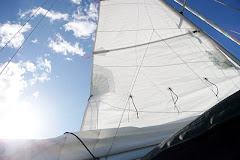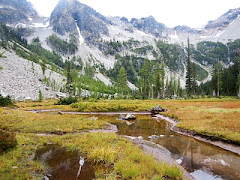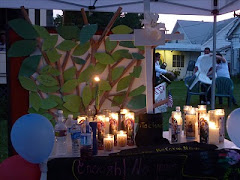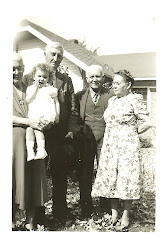BLUE PONDS OF OCTOBER
Listening strip mine
To go back and go deep down
Not drill. A just look
waking by the hour
Late chance for wonder
an earful of time
Jim Bodeen
23 October 2015

OUT CROPPINGS
Our family has a punch card on the refrigerator door
for multiple crossings on US2.
That man still lives on the farm
he was born on, so he doesn’t believe
in getting out too far.
I was raised on Lewis & Clark roadside markers
In 1919 motorists called US2,
Theodore Roosevelt International Highway,
I was raised on Lewis & Clark roadside markers
alongside the highway.
In 1919 motorists called US2,
Theodore Roosevelt International Highway,
calling it the greatest highway
in all America, a series of interconnected
rutted roads, turning to gumbo when wet.
In our own family history
on the HiLine, there are black and white
photographs from 1953
when we traveled to Seattle
where my father’s mother had moved.
My father’s sister had also moved out west.
190,000 years ago glaciers pushed through here,
and as they moved south they
blocked the Missouri River.
Ice sheet lasted 60,000 years
leaving small ponds and glacial till.
The Missouri River never returned
to its original channel, now
occupied by the Milk River.
The elevators my father managed
in NW rural North Dakota
are now considered historic—
As railroad lines
branched out
across the Midwest in the late
1800s and early 1900s,
grain elevators sprang up
beside them. Horse-drawn
wagons were the means
of getting the grain to market.
Grain elevators were built
ten to twenty miles apart—
or together. Country elevators
they were called. Your Dad
ran the Great Northern Elevator
in town, but he also worked
the Peralla on the RR line
between Bowbells and Flaxton.
The Rural Electrification Act
brought electricity to the farms.
Mama used to tell me
of the day they turned on the lights.
When Theodore Roosevelt lost his wife and mother
on the same day, he came to North Dakota
to recover. To a cabin. To be in winter.
Buffalo hunters took 40,000 robes
from the Rosebud area 50 years after William Clark
came through the area in 1806.
My relationship with US2
began when we left town
in 1956. I’m looking out
the back window in tears
waving goodbye to my Grandma.
Tyler Lyson, a high school sophomore,
walked out on his uncle’s farm in 1999, near Marmouth
looking for fossils, and uncovers a duck-billed dinosaur
that lived 67 million years ago, in mummified
condition with much of the skin intact.
He named him Dakota.
I recommend the movie,
Rabbit Proof Fence for the way
it re-connects me to my grandmother.
The North Dakota Heritage Museum
in Bismarck, currently has a gallery of posters
and photographs from the workers
of the CCC—Civilian Conservation Corps—
and at the back, in the Archives Room—
you need to sign in. I peeked—
and a woman asked if she could help me.
She asked, too, if I was a CCC worker.
No, I said, but I’m honored
that you asked. Perhaps, she said,
you know someone who was.
Yes, I said, thanking her again,
My grandfather.
Jim Bodeen
22 October 2015
Livingston, Montana
INTO DEEPER SILENCE
Camped on the Little Missouri
late October, the
young Ranger
tells us the park’s winterized
and water shut off. Five miles in,
we’re the only ones at Cottonwood.
Theodore Roosevelt National Park at Medora.
Steak tacos and Mexican Rice.
Grasses all yellow and brown
contrast with tinted greens in sage.
Animal tracks on the River.
A lone buffalo just before the campgrounds.
Slow traveling and museums
from Mandan to Bismarck
exhaust the imagination.
Meriwether Lewis in my head again.
What happens to the mind inside
deep travel. Impossibility of return?
Extinction as graphic as the dinosaur.
Crossing the ocean floor of North Dakota,
why have I never imagined underwater
creatures larger than the camper on the pickup?
On the top wall of the museum, a movie
shows the planet giving birth to continents
over time—598 million years in 1 minute, 46 seconds—
the fetus of our world being born. I film
it four times. My wife records it on her telephone.
Hearing language of Hidatsa and Mandan
by native speakers with translations.
Williston Basin and Bakken Formation
become more familiar than family.
Circumference and depth. And just below
Bakken, one more possibility,
Three Forks—banned for now from drilling.
Gas flares light up North Dakota skies. Tonight,
though, it’s quiet in the Park—just us and critters,
and we’re turning towards home. Another
confrontation rich with tribal chance.
The Corps of Discovery, almost forgotten
for 90 years, made the journals vulnerable,
without accompaniment.
So much we don’t know, so…
Jim Bodeen
20 October 2015
Cottonwood Campground
Theodore Roosevelt National Park













































































No comments:
Post a Comment